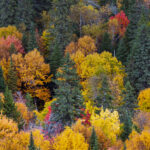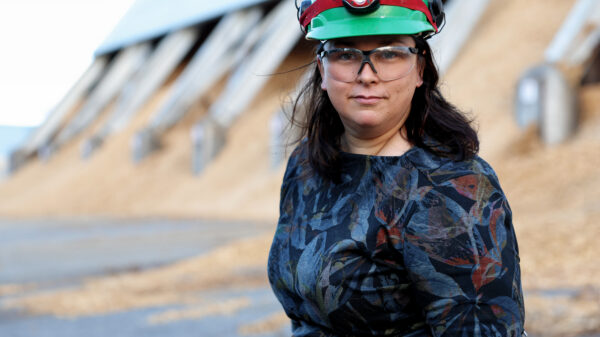(Photo credit: Anita Brar)
Landscapes supporting a diverse and productive forage base may be the best, says one study presented at last week’s NCASI meeting in Montréal
Using a herd of woodland caribou that were bottle-raised at the University of Fairbanks, Alaska during the summer of 2009, researchers in B.C. took them ‘out to dine’ at different alpine and boreal forest research sites to study what the animals ate. They wanted to determine their typical diets when feeding across habitat types and successional stages available to caribou in northeastern B.C.
Based on the first year of a 3-year study, it turns out that an abundance of deciduous shrubs such as certain species of willow, green alder, and paper birch help lactating caribou meet their nutritional requirements during summer. In general, young, growing forests along with some alpine communities have more of these shrubs. This is according to the research presented by Kristin Denryter, a PhD candidate at the University of Northern B.C. (UNBC), at the recent National Council for Air and Stream Improvement Meeting held in Montréal last week.
Caribou study can inform forest management
Woodland caribou numbers have been declining across much of Canada and work like this attempts to understand the influences of nutrition on health and productivity of caribou herds, how changes in habitat influence the nutritional well-being of caribou, and the role of nutrition in caribou conservation. This project was born from a large collaboration between Drs. John and Rachel Cook of NCASI, Dr. Katherine Parker of UNBC, and Dr. Perry Barboza of University of Alaska Fairbanks.
To understand how different habitats influence nutrition for these animals, Kristin and Rachel spent over 700 hours observing the summertime feeding habitats of the tame caribou, carefully recording the plant species they prefer, the rate at which they eat them, and even the average amount of plant matter contained in each bite. John and a crew of technicians work on the habitat side, evaluating what is available to the animals by clipping vegetation samples and taking forest measurements. Ultimately, the researchers hope to be able to link ecological condition, disturbance and plant succession, and forest management to the nutritional value of plant communities and landscapes for caribou.
This information, gathered over a variety of ecosystem types and stand ages, should help inform future forest management activity planning by improving our understanding of the livelihood strategies of these majestic animals. Also interesting: given the right conditions, caribou can eat a lot of mushrooms. Who knew?
Reliable data to help respond to industry challenges
NCASI is recognized as the leading source of reliable data on environmental issues that pertain to forest management, and this was just one of several fascinating presentations offered at the conference, which looked at everything from migratory bird deaths and water recycling issues to Quebec’s new forest tenure laws.
The conference was attended by Quebec government representatives, policy makers, graduate students and researchers. It focused on sharing the latest scientific findings, and discussing best practices to help Resolute and other forestry companies respond to the challenges and opportunities related to forest environmental management and sustainable forestry.
To contact Kristin Denryter email her at denryter@unbc.ca







